

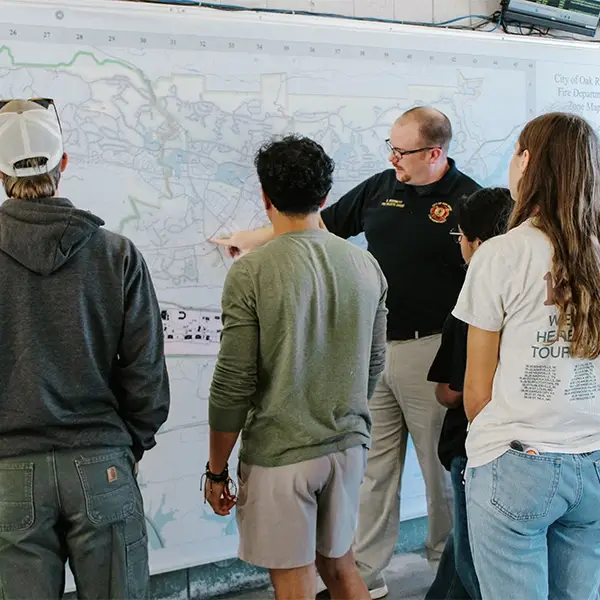

The Conversation: ‘From Confederate general to Cherokee heritage: Why returning the name Kuwohi to the Great Smoky Mountains matters’

It’s not every day that the name of a mountain is restored to the one used by Indigenous peoples for centuries.
But after nearly two years of trying, the Eastern Band of Cherokee Indians finally convinced the U.S. Board on Geographic Names on Sept. 18, 2024, to formally agree to rename the highest point in the Great Smoky Mountains National Park of Tennessee to Kuwohi (koo-whoa-hee).
The mountain, known as “Clingmans Dome” since 1859, has been a sacred place for the Cherokee people, serving as a place of prayer, reflection and gathering of mulberries for medicine. In fact, the name Kuwohi translates to “the mulberry place” in Tsalagi, the Cherokee language.
Though known as Kuwohi by the Cherokee people for hundreds of years, explorer Arnold Guyot effectively ignored that history after he surveyed the mountain range in 1859. Guyot named the peak “Clingmans Dome” after his friend Thomas Lanier Clingman, a North Carolina U.S. senator and a Confederate brigadier general during the Civil War. Clingman never set foot on this mountain, but his name remained there for 165 years until now.
What is place name repatriation?
The government’s renaming of the mountain to Kuwohi is a significant example of place name repatriation, or the return of an original, Indigenous name to a particular place or landscape.
Sometimes the primary motivation for place renaming is to remove an offensive or irrelevant place name from the landscape, such as the renaming of Squaw Peak in Arizona to Piostewa Peak in 2008.
In other cases, such as the renaming of Mount McKinley in Alaska to Denali in 2016, the motivation was to create a more authentic and historically accurate name for a particular place.
In the case of Kuwohi, the return to its original name was a mixture of both. The government’s decision recognized the original Indigenous name and removed the name of a white man who defended the enslavement of African people. It is also about restoring a larger sense of respect and recognition of Indigenous identity across the landscape.
Just as important is the fact that it was individuals from the Eastern Band of Cherokee Indians who put forward this proposal and remained the lead throughout the process.
Place naming is only truly reparative if these processes truly reflect the agency and intent of these historically oppressed groups. Otherwise, it contributes to the long history of dismissing Indigenous claims to land and culture by not involving them.

Why does place naming matter?
A name is one of the most fundamental ways to identify and give meaning to places. In other words, the name of the place makes a big difference in how people perceive it.
There is growing public recognition that place names can transmit harmful messages that misrepresent the history and identity of minority communities. Place names also can demonstrate how those in power have used them to disrespect and misrepresent ethnic and racial groups that have been historically discriminated against.
For those groups, the U.S. Department of the Interior’s Advisory Committee on Reconciliation in Place Names found in 2022 that derogatory place names are a source of recurring trauma.
If place naming did not matter, disputes over name changes would not occur. Some critics find place renaming to be an example of unnecessary political correctness, while others see it as a meaningful solution that will leave a lasting positive impact.
The elimination of names of Confederate generals from some U.S. military bases provides another example. Former President Donald Trump has pledged to restore the name “Fort Bragg” to the North Carolina Army base that’s known today as Fort Liberty if reelected. Originally named after Braxton Bragg, a slave-owning Confederate general, the fort was one of nine U.S. installations that the Defense Department ordered in 2023 to have their names changed to among 3,700 recommendations.
Trump’s stance exemplifies the wave of backlash that has occurred against local and state school officials across the country that have removed the names of Confederate generals and others from public buildings.

Despite such backlash, efforts by Indigenous people and civil rights advocates slowly move forward and are seen across the U.S. in places like streets, neighborhoods, college campuses and beyond.
For Lavita Hill and Mary Crowe, the two members of the Eastern Band of Cherokee Indians who took the lead on submitting the proposal, the renaming of Kuwohi was a moment of success. Their campaign was heavily inspired by the renaming of Mount Doane to First Peoples Mountain in Yellowstone National Park in 2022.
Crowe told reporters that she saw friends and relatives shed tears when they learned of the name change. “It was humbling,” she said. “It was beautiful.”
What comes next?
The success of the effort to restore the name Kuwohi may help other communities in their ongoing place renaming efforts.
One such proposal involves a 100-year-old fight to rename Mount Rainier in Washington state to “Tacoma,” the original name given to it by the Salish people of the Pacific Northwest.

This movement began in 1924 among the Salish and other groups because its namesake, Peter Rainier, was a British naval officer who was known as being “anti-American.”
Another example is a push by 20 different Indigenous tribes, including the Lakota Nation and the Oglala Sioux Tribe, to rename Devils Tower in Wyoming to Bear Lodge. The current name of this butte resulted from a poor English translation of the original Indigenous name of “bear lodge” to “bad god’s tower.” Over time, the name was simplified to “Devils Tower.”
As geographers who have studied the significance of place renaming, we have learned that it is important to engage the folks that these movements will benefit most in all conversations and decisions.
What is at stake is not just removing insulting names, but also ensuring that the process of changing place names is collaborative of all Americans, especially historically oppressed communities, to truly be restorative and meaningful for society.
Seth T. Kannarr, PhD Student in Geography, University of Tennessee and Derek H. Alderman, Chancellor’s Professor of Geography, University of Tennessee
This article is republished from The Conversation under a Creative Commons license. Read the original article.
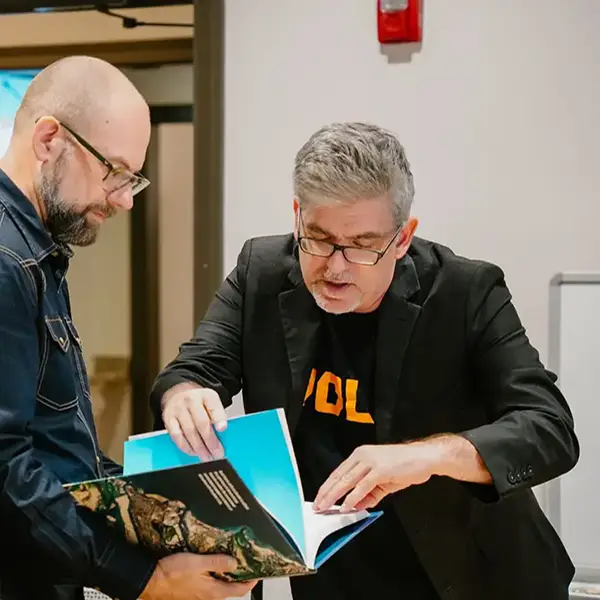
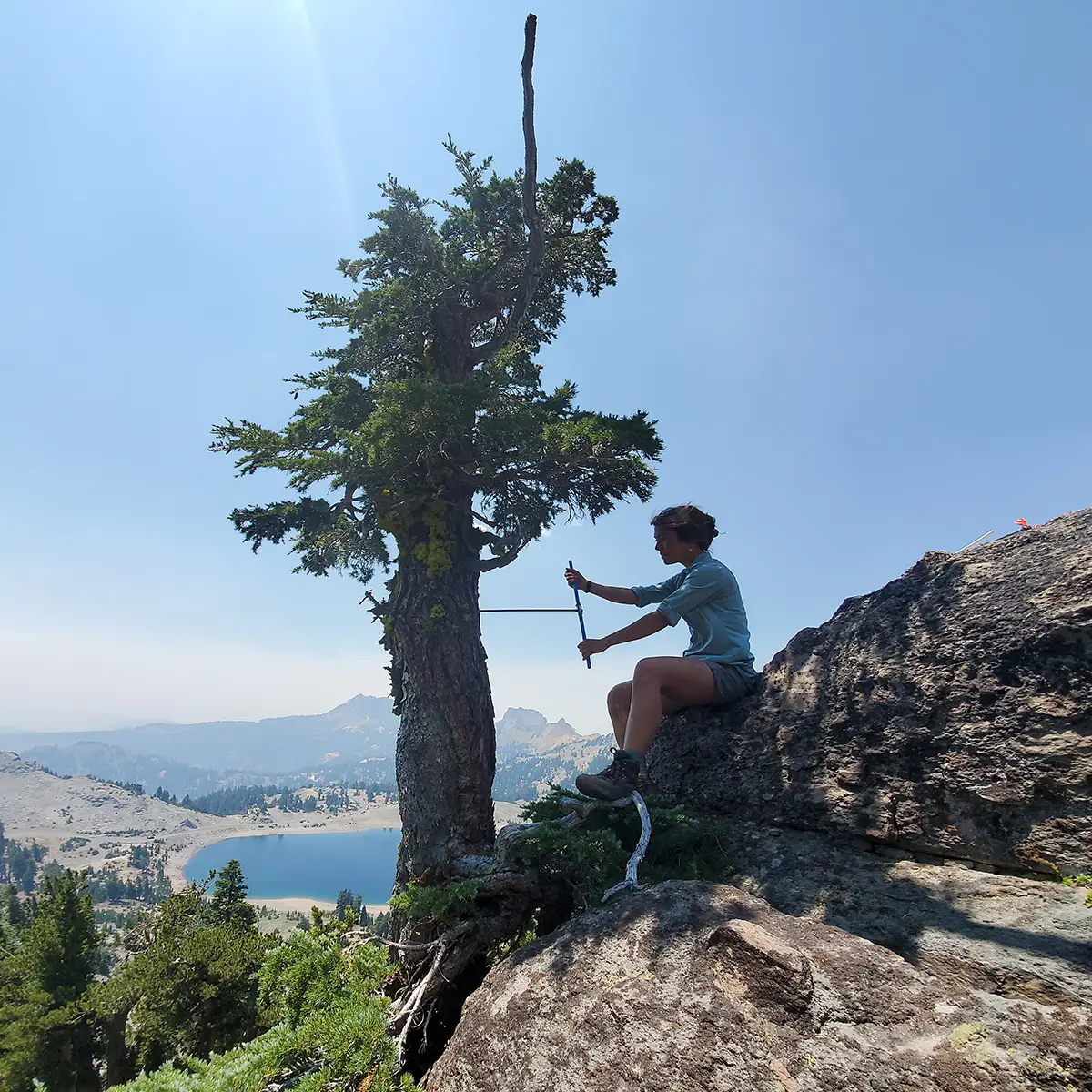
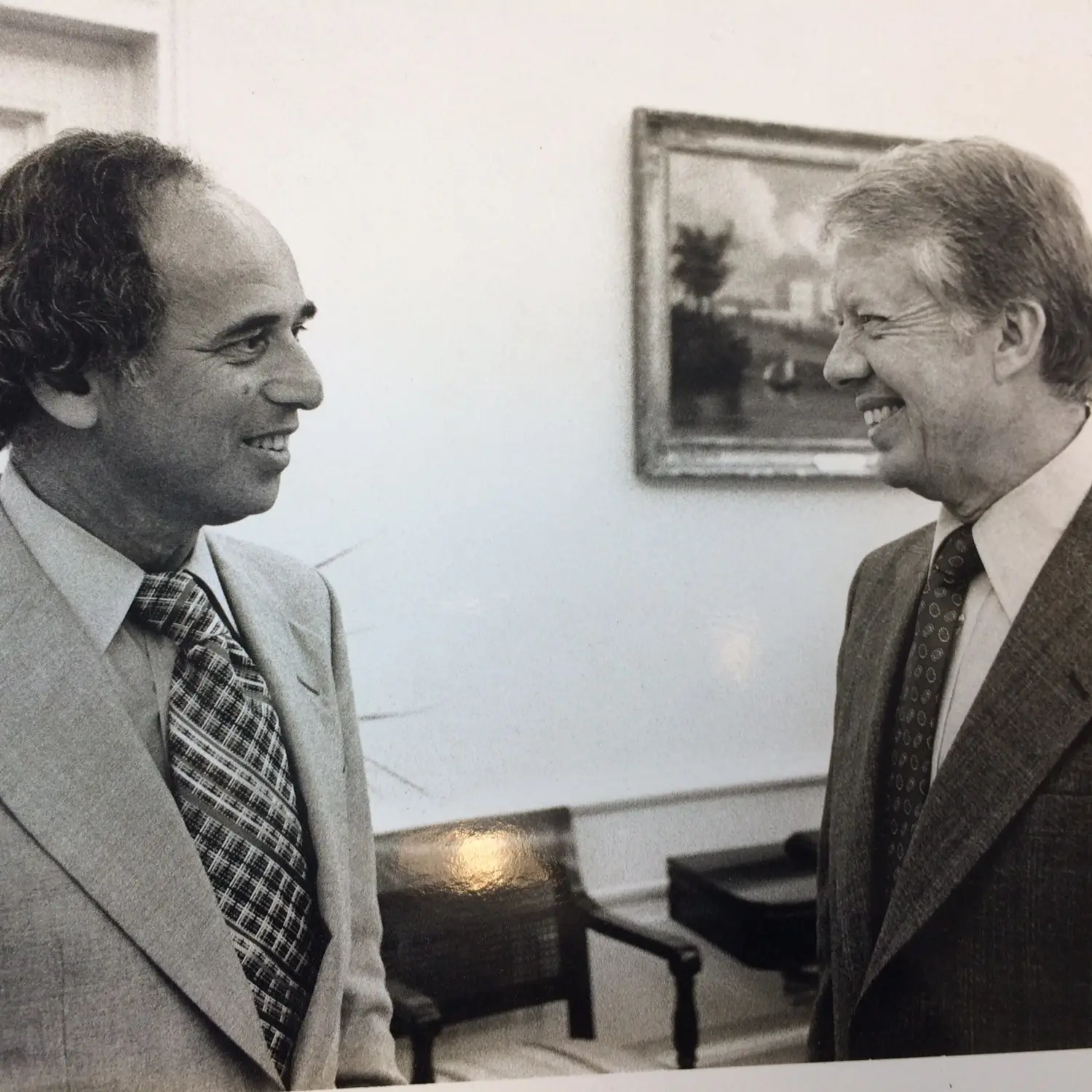

Derek Alderman in ‘The Conversation’: Offensive names dot the American street map − a new app provides a way to track them

The racially motivated tragedy in Charleston, South Carolina, in 2015, when a white supremacist murdered nine Black worshippers, and the deadly white nationalist rally in Charlottesville, Virginia, two years later compelled Americans to confront the role played by memorials, monuments and other symbols in glorifying racist ideologies.
George Floyd’s murder at the hands of a white Minneapolis police officer in 2020 only lent urgency to that challenge.
Part of the racial reckoning in the wake of Floyd’s death is a movement to remove offensive names from public places. Some names perpetuate demeaning slurs and stereotypes against people of color. Others honor historical figures linked to racism and colonization. This movement is what we geographers call America’s “renaming moment.”
Government officials, activists and other people have called for a renaming of certain places and institutions. Examples include removing Christopher Columbus’ name from a Chicago public school and erasing the name of former KKK leader and governor Bibb Graves from a University of Alabama building. The elimination of names of Confederate generals from several U.S. military bases provides another example.
These changes have become flash points of community activism and debate, both in support of and in resistance to name revisions.
A widespread element in this renaming moment are offensive street names. We believe discussions and decisions about removing these names may benefit from comprehensive sources of information that allow the public to know how pervasive a problem the country might be confronting.
The recent release of an app developed by STNAMES LAB, an international team of scholars of place names, allows users to conduct nationwide inventories of discriminatory roadway names, revealing how often and where they are found.
We believe the app is an important educational tool. It will help communities understand how discriminatory beliefs are woven into everyday spaces and the harm caused by offensive names.
After tracking a few of America’s most contested place and institution names, we believe the app will help people see the changes necessary to recognize and repair past wrongs in street naming.
Recognizing that names can harm and heal
There is growing public recognition that place names are not neutral identifiers of locations. Rather, place names can transmit harmful messages that misrepresent the history and identity of minority communities. As a result, they work against the possibility of a more equal society.
One highly publicized effort at identifying and replacing offensive place names happened in November 2021.
U.S. Interior Secretary Deb Haaland, the first Native American to hold that post, ordered the removal of the word “squaw,” hereafter called “sq—,” from the names of 650 mountains, rivers and other sites on federal lands. Haaland’s order capped many years of demands from Native American groups to eradicate the racist and sexist label.
Then, in 2022, Haaland established the Advisory Committee on Reconciliation in Place Names, comprising members from tribal nations, Native Hawaiian organizations and scholars. Its guiding principles call on the U.S. to recognize the historical role of racism and sexism in naming places. They also highlight how those in power have used names to disrespect, misrepresent and control certain groups that have been historically discriminated against.
Drawing from public comments over two years, the committee found that derogatory place names are a source of recurring trauma for groups that have been historically discriminated against. As one Native American community leader told the committee, “Names matter, as they can build or break a relationship with the land and have the power to uplift or marginalize communities.”
Similarly, a 2022 report by the National Association of Tribal Historic Preservation Officers and the Wilderness Society found derogatory place names can create an unwelcoming environment that some people avoid. Additionally, a 2022 study by Emory University found that homes on streets named for pro-slavery Confederate figures sell for less and take longer to sell than comparable houses on nearby roads.
Renaming roads serves as an important moment of community reconciliation. That’s because the frequent use of offensive street names exacts a hefty social and psychological toll on marginalized communities, according to the cultural historian Deirdre Mask.
When hurtful names are removed from roads, some members of oppressed communities describe how the spirit or feeling of places can change and allow healing to begin.
The difference an audit makes
The Interior Department committee suggests that efforts to change offensive names should be driven by research. It encourages local residents to identify where derogatory place names exist, when and how they were named, and how those names can harm the well-being of community members.
Data scientist Catherine D’Ignazio and her team at the Data + Feminism Lab agree. They call for conducting audits that collect and visualize data on unjust names, to challenge the damaging effects and abuses of power behind these symbols.
The newly released street names app from STNAMES LAB allows people to do that. Fed with Open Street Map data, it lets users carry out queries, as well as map and download streets containing certain terms.
Once users enter a name, they can check the specific location of named roads on a map. They can also download query results as a spreadsheet to get the full list of streets.
The app offers an easy visualization of the frequency and geographic distribution of names. You can see whether the name is found across the nation or concentrated in a specific region.
Demonstrating the app
To illustrate the app’s capabilities, we searched for names that have sparked public controversy.
Federal condemnation of “sq—” as a place name does not mean that local authorities will follow suit, even if some cities and states are already doing so. We found 429 streets scattered across 47 states with a name containing the word “sq—.”
Although “sq—” originated in the Algonquian language, European settlers corrupted and misused the word in reducing Native American women to a simplistic and sexualized image. Being called “sq—” is still a painful daily reality for Indigenous women. Many of them say the term injures their self-image and sense of belonging.
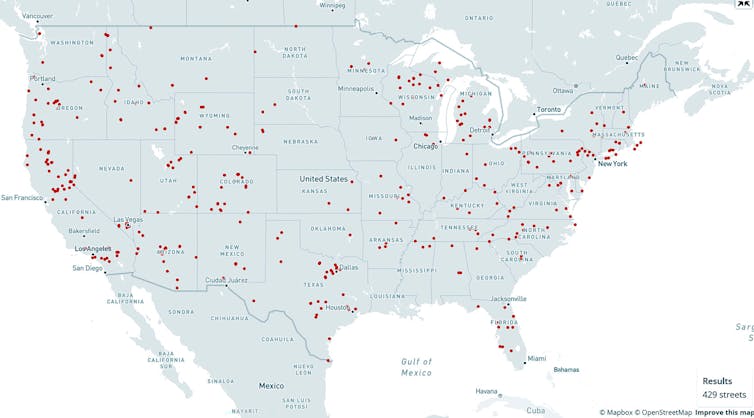
The street name app exposes other racist Native American stereotypes. Variations of “redman/men” and “redskin” appear on 211 roads.
“Redskin” is a portrayal of Native Americans as warlike and dangerous. According to Native writer Angelina Newsome, colonialists often used it interchangeably with “savage.”
We found 415 roads in 46 states using the word “savage” in their name.
Though references to “redman” and “redskin” have long shown up in consumer products and sports team mascots, many Native groups challenge these stereotypes as demeaning.
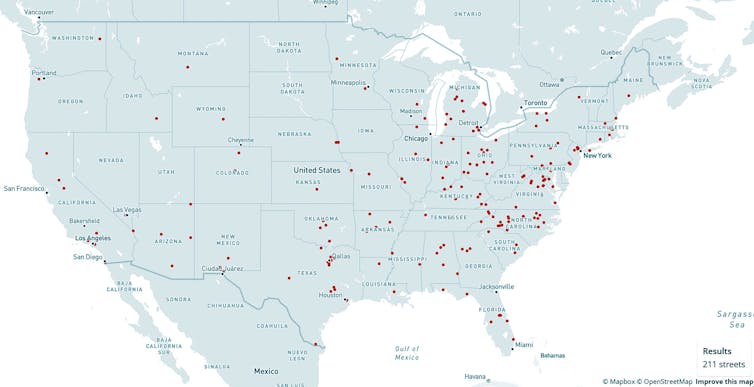
Searching for offensive street names across the country is about more than simply collecting information. Data and maps can be part of the process of expanding one’s sphere of awareness and caring for people living with unjust naming practices.
Tracking and visualizing these inequalities is key to developing the “civic imagination” that scholar Catherine D’Ignazio believes is necessary to imagine and call for more inclusive alternatives to the current American landscape of names.
What is at stake is not just removing insulting names in and of themselves, but ensuring that the places marked by these names feel more welcoming and respectful of all Americans.
Derek H. Alderman, Professor of Geography, University of Tennessee; Daniel Oto-Peralías, Associate Professor of Economics, Profesor Titular de Economía, Universidad Pablo de Olavide, and Joshua F.J. Inwood, Professor of Geography and Senior Research Associate in the Rock Ethics Institute, Penn State
This article is republished from The Conversation under a Creative Commons license. Read the original article.
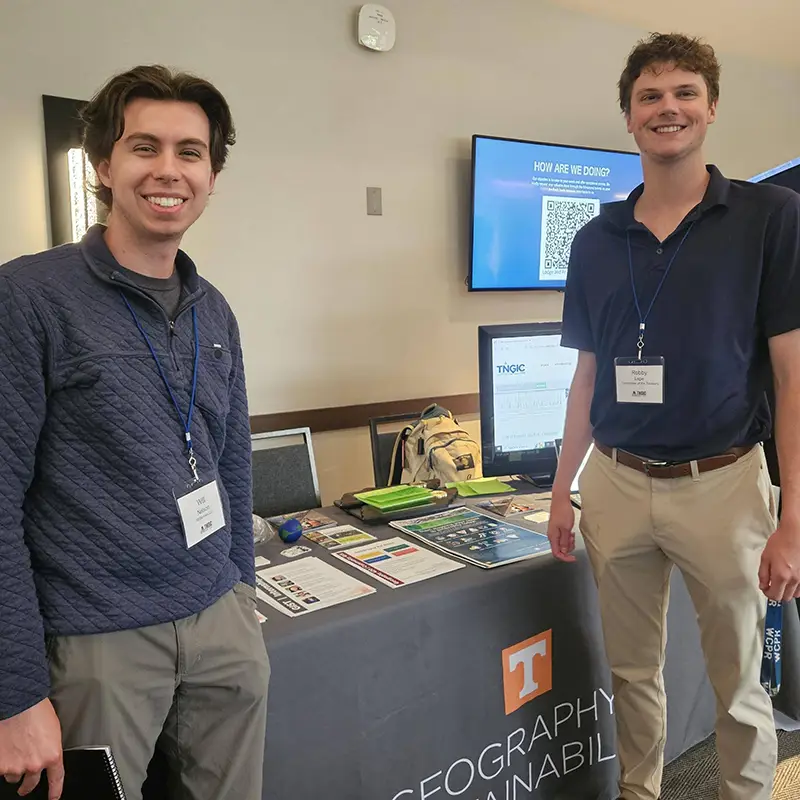
UT Geographers Put GIS on the Map at Statewide Meeting
UT Department of Geography and Sustainability faculty, students, and staff represented Vol geography in a huge way at the annual Tennessee Geographic Information Council (TNGIC) Conference for geospatial professionals April 9–11, 2024, at Montgomery Bell State Park, in Burns, Tennessee, west of Nashville.
Michael Camponovo, director of both UT’s GIS outreach and the GIST Program, was conference chair. A host of Vol geographers led workshops, gave presentations, and earned awards during the conference.
“As a student, TNGIC gave me the opportunity to create and share maps, give presentations, and build the professional network that eventually led to my job here at UT,” said Camponovo. “As a GIS professional, I want my students and alumni to have these same opportunities to launch their careers. That’s why I’m so passionate about getting involved with TNGIC.”
The TNGIC works to improve connections among agencies working with geographic information systems (GIS) in Tennessee. Their annual conference offers opportunities for GIS professionals and students to network, learn, and share their work and new ideas in the field. Keynote addresses at the conference were delivered by Budhendra Bhaduri, director of the Geospatial Science and Human Security Division at Oak Ridge National Laboratory, and Nikolas Smilovsky, geospatial solutions director at Bad Elf, a global navigation satellite systems company.
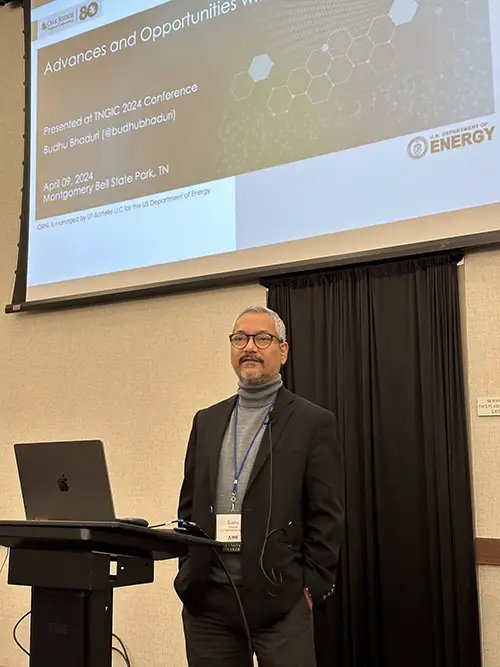
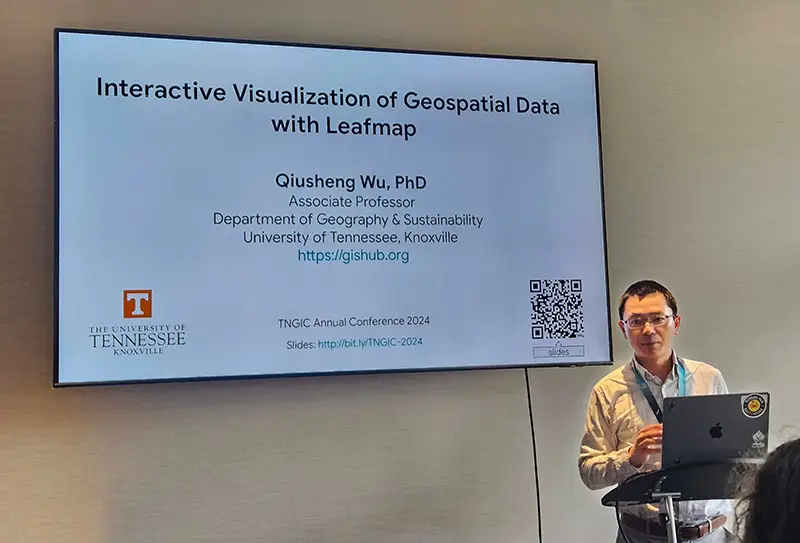
Associate Professor Qiusheng Wu led a workshop focused on cloud computing with Google Earth Engine and Geemap and presented with the FOSS (open-source GIS) community on Leafmap and data visualization. Wu also organized the inaugural TNView Remote Sensing Presentation Contest for students.
Lecturer Mayra Roman-Rivera and Professor Derek Alderman shared the work their students are doing as part of the GEOG 420—GIS in the Community class.
UT’s GIS Lab Manager Tim Kane volunteered with the UT cemetery mapping team to collect terrestrial lidar as part of a service project at Montgomery Bell State Park.
Student Caroline Petersen earned first place in the conference mapping contest, best analysis category, for her research using MaxEnt for pollinator prediction in Davidson County. She and fellow Vol Josiah Cubol were selected to join the TNGIC Outreach committee.
Emma Blanks and her team from GEOG 420 earned the Viewer’s Choice award in the map gallery for their work on the revised Tennessee Atlas. Blanks also gave a presentation highlighting how she and her team used ESRI’s Experience Builder to create the interactive Tennessee Atlas.
Mahnaz Meem won third place in the inaugural TNView Student Remote Sensing Presentation Contest. Cam Corsino presented a fascinating, in-depth storymap focusing on Knoxville’s Red Summer.
In a less GIS-specific activity at the conference, Ben Pedersen and recent alumnus Robby Lape won first place out of 32 teams at the 2024 cornhole tournament. They took home brand new cornhole boards as prizes.
“I hope anyone interested in learning more about GIS and geospatial technology will join us for future TNGIC events,” said Camponovo. “It’s a great way to learn about new technologies and workflows, meet alumni and network, and learn about jobs. Between presenting, submitting maps and posters, leading workshops, serving as business partners, and more, there are many ways for students and alumni to engage with the organization.”
Interested geographers can participate in the free, one-day East Regional Fall Forum in Johnson City (ETSU) on Tuesday October 15, 2024. The next annual meeting will be at the Embassy Suites in Murfreesboro April 15–17, 2025.
The geography department thanks the dozens of Vol alumni who attended the conference and made current students feel welcome within the organization:
- Danielle (Dami) McClanahan organized the cornhole tournament and was elected to the TNGIC board of directors.
- Tracy Homer shared her expertise with the FOSS community on creating art from digital mapping products.
- Caitlyn Mills presented her work with Stantec for the Tennessee Department of Transportation.
- Paul Dudley served as the TNGIC president over the last year and presented on his project of mapping all the trails in Tennessee. He was also instrumental in organizing our very first “Nerf war.”
- Kurt Butefish of the Tennessee Geographic Alliance provided an update on K–12 geography education in Tennessee and was a business partner for the conference.
- Danielle McClanahan, Caitlyn Mills, and Bass Neal from Stantec were also business partners at this year’s conference.
- Tracy Homer designed and created the Tennessee Rivers laser cut map that was the grand prize for our door prizes.
- Sam McCloud, Caelan Evans, and Danielle McClanahan were instrumental in organizing the conference.
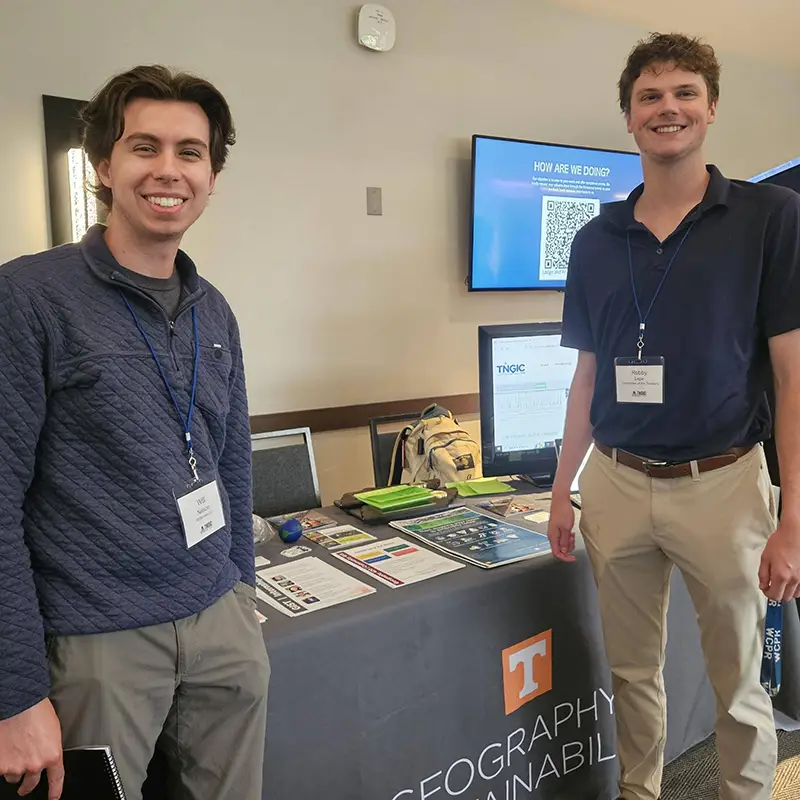

Schwartzman and Shade Map Economic Opportunity in Appalachia


The Appalachian Regional Commission (ARC) awarded a planning grant of just over $389,000 to UT Assistant Professor Gabe Schwartzman, Department of Geography and Sustainability, and incoming Assistant Professor Lindsay Shade, Department of Sociology, to help create and improve geographical information system (GIS) services for rural counties in Appalachia. This important project will help provide valuable information for post-coal industry economic development throughout Appalachia.
The grant is part of ARC’s Appalachian Regional Initiative for Stronger Economies (ARISE) program, a $1.7 million investment of grants to develop workforce capacity plans in key industries in Appalachia. In addition to GIS development, these include cybersecurity, infrastructure, and housing.
“Better equipping counties in Central Appalachia with geospatial technology can help these communities adapt to a changing fiscal landscape, and a future without coal-based revenue,” said Schwartzman.
Added support from the University of Tennessee and other regional partners brings total funding for the project to more than $489,000.
The UT team’s project seeks to enable county governments to improve land records throughout Appalachian Kentucky, Tennessee, Virginia, and West Virginia to pursue economic development opportunities more strategically as the communities shift away from coal mining as a primary industry.
Community and university partners include the University of Virginia at Wise, West Virginia University, East Tennessee Economic Development District, Appalachian Voices, the Livelihoods Knowledge Exchange Network, West Virginia Association of Geospatial Professionals, and the West Virginia Geologic and Economic Survey. They will collaboratively plan for regional land records infrastructure.
“Accurate and accessible parcel data is crucial for property tax systems that county governments depend on for disaster response planning and long-term economic development,” explained Shade, who officially joins the college on August 1. “Yet, high quality parcel data and geographic information systems require ongoing human and financial capacity, which are often lacking in hard hit coal impacted communities.”
The project team will host listening sessions to assess the training needs for local governments, identify existing resources and gaps at the county, district, and state levels, and better understand how industry and community stakeholders can use GIS data to meet their goals. The team will develop a plan from these sessions to help county-level partners train and use GIS to help sustain their communities.
Companion projects receiving ARISE grants include cybersecurity education by Marshall University Research Corporation, training for water-supply operators by the University of Kentucky Research Foundation, and a plan to increase affordable housing by the Federation of Appalachian Housing Enterprises.
“This round of ARC’s ARISE funding truly represents the forward momentum of Appalachia’s future,” said ARC Federal Co-Chair Gayle Manchin. “From growing workforce capacity in cybersecurity, to training workers in state-of-the-art geographical information systems, these projects ensure that Appalachians will be active participants in building a new era of opportunity across our region and the entire country.”
ARC is an economic development entity of the federal government and 13 state governments focusing on 423 counties across the Appalachian Region, with a mission to innovate, partner, and invest to build community capacity and strengthen economic growth in Appalachia to help the region achieve socioeconomic parity with the nation.
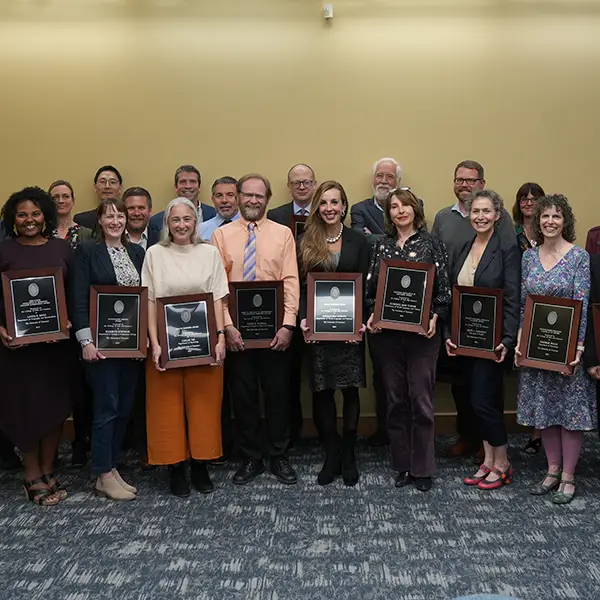
Faculty Honored for Excellence at Annual College Convocation
During the 2023 UT College of Arts and Sciences Faculty Convocation, faculty with the Department of Geography and Sustainability received awards for excellence in research, teaching, and outreach.
LaToya Eaves, Associate Professor
Excellence in Research & Creative Achievement Awards: Mid-Career
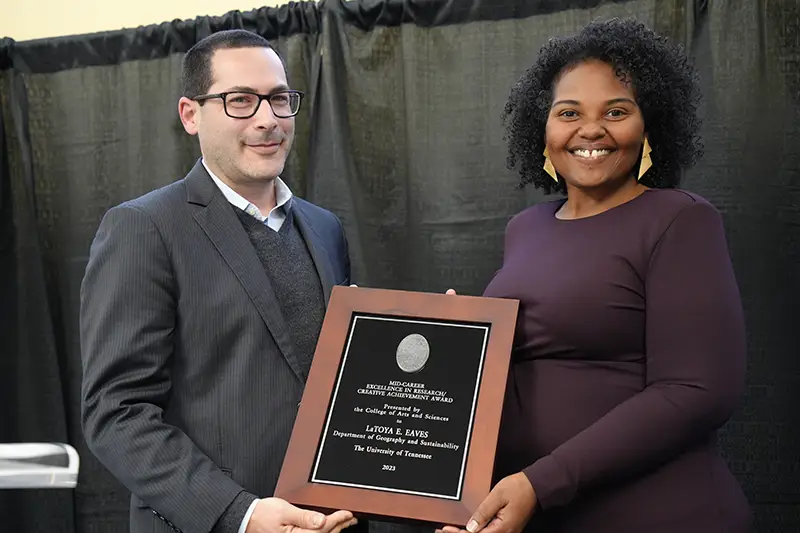
Eaves is one of the most significant scholars and intellectual leaders in the field of human geography. She is credited with pioneering the new area of “Black Geographies” as an emerging sub-discipline that has altered how all of human geography conceptualizes race, gender, and location.
Her studies focus on Black people’s lived experiences with placemaking and spatial knowledge, specifically how race, gender, class, and regional/place context interact to form patterns of identification, belonging, and social injustice. For her contributions, she is one of the first associate professors to be selected as a lifetime Fellow of the American Association of Geographers, with two prestigious awards from that association.
Melissa Hinten, Senior Lecturer
Excellence in Teaching Awards: Lecturer
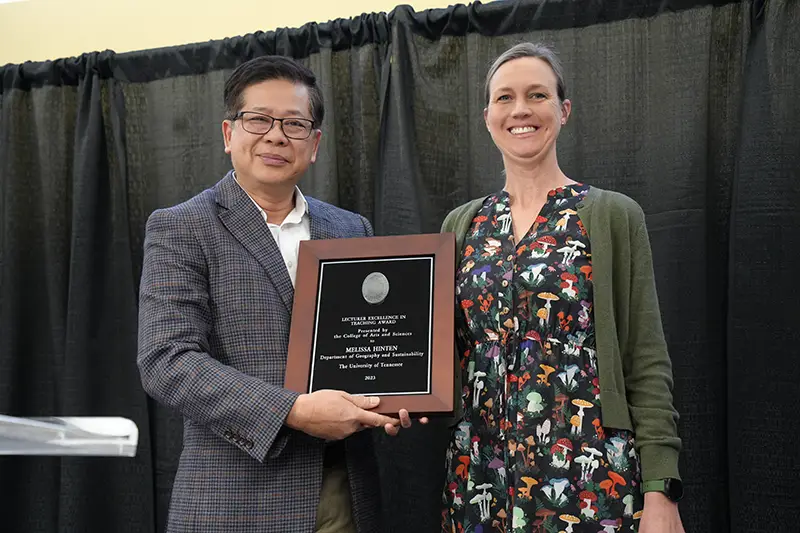
Hinten is the director of the sustainability program in the Department of Geography and Sustainability. She has successfully led the program since 2017 and helped it to transition from an IDP to a full major. She has created numerous courses in sustainability, physical geography, and ecology courses which are essential to the sustainability program. As an instructional leader with the UT Center for the Integration of Research, Teaching, and Learning she helped institute evidence-based teaching and helped to make these programs more accessible to graduate students.
Hinten earned the Chancellor’s Honors Award for Excellence in Advising in 2019. Her teaching, mentorship and passion for knowledge greatly contribute to the broader goal and objectives of the department to not only provide an excellent education to our students, but also to create an environment for the college, the community, and our university.
Derek Alderman, Professor
Faculty Academic Outreach Award: Research & Creative Activity
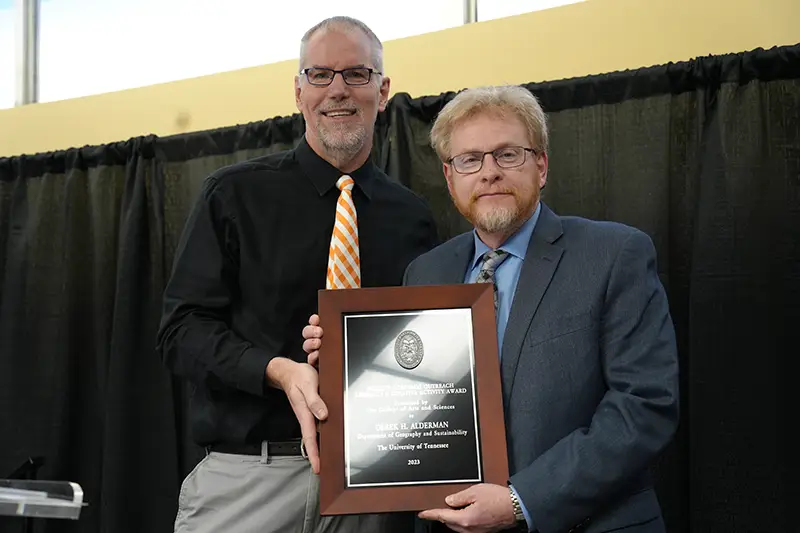
Alderman is an exemplary role model of a scholar leveraging their research to assist wider communities in addressing issues of racial inequality and pushing for social justice in landscapes of public commemoration, naming, and tourism. A departmental awards committee composed of faculty and student members chose him as a nominee for his innovative perspective as a cultural geographer whose scholarship seeks to challenge and transform inequities in the organization of places, institutions, and social practices.
Alderman is a nationally recognized authority on street-naming, especially for civil rights icon Martin Luther King Jr. He explores place names as cultural arenas for reckoning with the histories and ongoing legacies of racism and as tools for promoting reconciliation, anti-racist education, and social justice.
